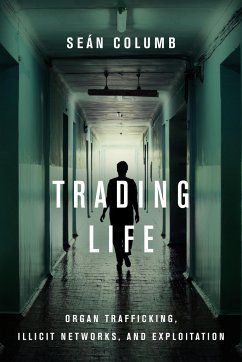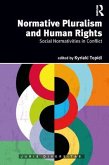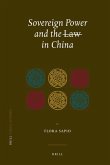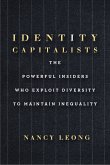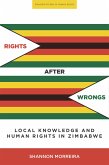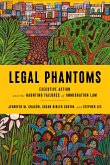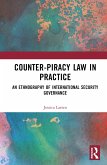- Gebundenes Buch
- Merkliste
- Auf die Merkliste
- Bewerten Bewerten
- Teilen
- Produkt teilen
- Produkterinnerung
- Produkterinnerung
"Trading Life investigates the emergence and evolution of the organ trade in Cairo, Egypt, based on interviews with organ sellers and brokers"--
Andere Kunden interessierten sich auch für
![Normative Pluralism and Human Rights Normative Pluralism and Human Rights]() Normative Pluralism and Human Rights202,99 €
Normative Pluralism and Human Rights202,99 €![Sovereign Power and the Law in China Sovereign Power and the Law in China]() Flora SapioSovereign Power and the Law in China237,99 €
Flora SapioSovereign Power and the Law in China237,99 €![Identity Capitalists Identity Capitalists]() Nancy LeongIdentity Capitalists24,99 €
Nancy LeongIdentity Capitalists24,99 €![Law Mart Law Mart]() Riaz TejaniLaw Mart129,99 €
Riaz TejaniLaw Mart129,99 €![Rights After Wrongs Rights After Wrongs]() Shannon MorreiraRights After Wrongs152,99 €
Shannon MorreiraRights After Wrongs152,99 €![Legal Phantoms Legal Phantoms]() Susan Bibler CoutinLegal Phantoms152,99 €
Susan Bibler CoutinLegal Phantoms152,99 €![Counter-Piracy Law in Practice Counter-Piracy Law in Practice]() Jessica LarsenCounter-Piracy Law in Practice178,99 €
Jessica LarsenCounter-Piracy Law in Practice178,99 €-
-
-
"Trading Life investigates the emergence and evolution of the organ trade in Cairo, Egypt, based on interviews with organ sellers and brokers"--
Hinweis: Dieser Artikel kann nur an eine deutsche Lieferadresse ausgeliefert werden.
Hinweis: Dieser Artikel kann nur an eine deutsche Lieferadresse ausgeliefert werden.
Produktdetails
- Produktdetails
- Verlag: Stanford University Press
- Seitenzahl: 224
- Erscheinungstermin: 21. Juli 2020
- Englisch
- Abmessung: 233mm x 156mm x 21mm
- Gewicht: 450g
- ISBN-13: 9781503608078
- ISBN-10: 1503608077
- Artikelnr.: 57172127
- Herstellerkennzeichnung
- Libri GmbH
- Europaallee 1
- 36244 Bad Hersfeld
- 06621 890
- Verlag: Stanford University Press
- Seitenzahl: 224
- Erscheinungstermin: 21. Juli 2020
- Englisch
- Abmessung: 233mm x 156mm x 21mm
- Gewicht: 450g
- ISBN-13: 9781503608078
- ISBN-10: 1503608077
- Artikelnr.: 57172127
- Herstellerkennzeichnung
- Libri GmbH
- Europaallee 1
- 36244 Bad Hersfeld
- 06621 890
Seán Columb is Lecturer in Law at the School of Law and Social Justice, University of Liverpool. His writing and commentary has been featured in Le Monde, The Times, The Guardian, and BBC World.
Contents and Abstracts
1Excavating the Organ Trade
chapter abstract
The introductory chapter provides contextual background on the organ trade
and outlines the key themes and arguments in the book. The current legal
and policy response to the organ trade is critically examined at the
international level. This analysis leads to an explanation of how law and
policy produce and construct vulnerability to exploitation in organ
markets. Egypt is introduced as the main research site, where in-depth
narrative interviews were carried out with organ sellers, brokers, and
transplant professionals.
2The Illegal Trade in Organs
chapter abstract
Chapter 2 examines how an illegal market in organs emerged in the
Egyptian-Sudanese context. Contrary to popular opinion, the organ trade is
not a direct consequence of a global shortage in organs. Rather, the trade
in organs is causally related to the transfer of transplant capabilities to
the global South. Accordingly, the commercial expansion of the transplant
industry is linked to the emergence of organ trading as an economic
activity. The organ trade is thus better understood as an informal economy
activity as opposed to a human trafficking offense.
3Organ Trading Networks
chapter abstract
The findings in Chapter 3 reflect personal encounters with Sudanese (North
and South) nationals who sold or arranged the sale of kidneys. Their
accounts provide unique insights into the organization and activities of
organ trading networks in Cairo and the political and social arrangements
that compel people to consider selling a kidney.
4Disqualified Bodies
chapter abstract
Chapter 4 examines the background conditions and legal structures that
underpin exploitative relations in organ markets. Although some of the
study respondents were physically coerced into organ removal, it is
exploitation experienced at the structural level that ultimately pushes
people into organ sale. In this regard, the oppressive processes of
exploitation that position migrant populations as organ sellers in Cairo
are explored through the social and legal context in which migrants, asylum
seekers, and refugees have sold a kidney. The wider implications of legal
measures established in response to reports of organ trafficking are
considered.
5Exodus
chapter abstract
Chapter 5 engages with the narratives of African migrants who attempted to
make the journey to Europe using irregular routes. Unable to finance the
cost of travel, people smugglers (referred to as samsara by the
respondents) encouraged them to sell a kidney to raise the necessary
capital. The experiences of the Sudanese, Eritrean, and Ethiopian migrants
interviewed in Cairo are used to examine the impact of crime and
immigration controls on informal market dynamics and to explore the
convergence of smuggling and organ trading networks in Cairo's informal
economy.
6Organ(ized) Crime
chapter abstract
Chapter 6 explores how changes to the regulatory environment influenced the
level of physical violence involved in the organ trade and the
organizational structure of a criminal group operating within and between
Khartoum, Sudan, and Cairo, Egypt. The criminal organization described in
this chapter should not be taken as representative of the organ trade as a
whole, as it exists in Egypt or elsewhere. It does, however, signal a need
for policy change to prevent the development of more pernicious forms of
organized crime.
7Regulating the Organ Trade
chapter abstract
The adverse effects of crime and immigration policies suggest that more
far-reaching legal reforms are needed with regard to the organ trade and to
other forms of exploitation nominally defined as trafficking offenses. In
this final chapter alternative regulatory approaches beyond criminal
sanction are explored.
1Excavating the Organ Trade
chapter abstract
The introductory chapter provides contextual background on the organ trade
and outlines the key themes and arguments in the book. The current legal
and policy response to the organ trade is critically examined at the
international level. This analysis leads to an explanation of how law and
policy produce and construct vulnerability to exploitation in organ
markets. Egypt is introduced as the main research site, where in-depth
narrative interviews were carried out with organ sellers, brokers, and
transplant professionals.
2The Illegal Trade in Organs
chapter abstract
Chapter 2 examines how an illegal market in organs emerged in the
Egyptian-Sudanese context. Contrary to popular opinion, the organ trade is
not a direct consequence of a global shortage in organs. Rather, the trade
in organs is causally related to the transfer of transplant capabilities to
the global South. Accordingly, the commercial expansion of the transplant
industry is linked to the emergence of organ trading as an economic
activity. The organ trade is thus better understood as an informal economy
activity as opposed to a human trafficking offense.
3Organ Trading Networks
chapter abstract
The findings in Chapter 3 reflect personal encounters with Sudanese (North
and South) nationals who sold or arranged the sale of kidneys. Their
accounts provide unique insights into the organization and activities of
organ trading networks in Cairo and the political and social arrangements
that compel people to consider selling a kidney.
4Disqualified Bodies
chapter abstract
Chapter 4 examines the background conditions and legal structures that
underpin exploitative relations in organ markets. Although some of the
study respondents were physically coerced into organ removal, it is
exploitation experienced at the structural level that ultimately pushes
people into organ sale. In this regard, the oppressive processes of
exploitation that position migrant populations as organ sellers in Cairo
are explored through the social and legal context in which migrants, asylum
seekers, and refugees have sold a kidney. The wider implications of legal
measures established in response to reports of organ trafficking are
considered.
5Exodus
chapter abstract
Chapter 5 engages with the narratives of African migrants who attempted to
make the journey to Europe using irregular routes. Unable to finance the
cost of travel, people smugglers (referred to as samsara by the
respondents) encouraged them to sell a kidney to raise the necessary
capital. The experiences of the Sudanese, Eritrean, and Ethiopian migrants
interviewed in Cairo are used to examine the impact of crime and
immigration controls on informal market dynamics and to explore the
convergence of smuggling and organ trading networks in Cairo's informal
economy.
6Organ(ized) Crime
chapter abstract
Chapter 6 explores how changes to the regulatory environment influenced the
level of physical violence involved in the organ trade and the
organizational structure of a criminal group operating within and between
Khartoum, Sudan, and Cairo, Egypt. The criminal organization described in
this chapter should not be taken as representative of the organ trade as a
whole, as it exists in Egypt or elsewhere. It does, however, signal a need
for policy change to prevent the development of more pernicious forms of
organized crime.
7Regulating the Organ Trade
chapter abstract
The adverse effects of crime and immigration policies suggest that more
far-reaching legal reforms are needed with regard to the organ trade and to
other forms of exploitation nominally defined as trafficking offenses. In
this final chapter alternative regulatory approaches beyond criminal
sanction are explored.
Contents and Abstracts
1Excavating the Organ Trade
chapter abstract
The introductory chapter provides contextual background on the organ trade
and outlines the key themes and arguments in the book. The current legal
and policy response to the organ trade is critically examined at the
international level. This analysis leads to an explanation of how law and
policy produce and construct vulnerability to exploitation in organ
markets. Egypt is introduced as the main research site, where in-depth
narrative interviews were carried out with organ sellers, brokers, and
transplant professionals.
2The Illegal Trade in Organs
chapter abstract
Chapter 2 examines how an illegal market in organs emerged in the
Egyptian-Sudanese context. Contrary to popular opinion, the organ trade is
not a direct consequence of a global shortage in organs. Rather, the trade
in organs is causally related to the transfer of transplant capabilities to
the global South. Accordingly, the commercial expansion of the transplant
industry is linked to the emergence of organ trading as an economic
activity. The organ trade is thus better understood as an informal economy
activity as opposed to a human trafficking offense.
3Organ Trading Networks
chapter abstract
The findings in Chapter 3 reflect personal encounters with Sudanese (North
and South) nationals who sold or arranged the sale of kidneys. Their
accounts provide unique insights into the organization and activities of
organ trading networks in Cairo and the political and social arrangements
that compel people to consider selling a kidney.
4Disqualified Bodies
chapter abstract
Chapter 4 examines the background conditions and legal structures that
underpin exploitative relations in organ markets. Although some of the
study respondents were physically coerced into organ removal, it is
exploitation experienced at the structural level that ultimately pushes
people into organ sale. In this regard, the oppressive processes of
exploitation that position migrant populations as organ sellers in Cairo
are explored through the social and legal context in which migrants, asylum
seekers, and refugees have sold a kidney. The wider implications of legal
measures established in response to reports of organ trafficking are
considered.
5Exodus
chapter abstract
Chapter 5 engages with the narratives of African migrants who attempted to
make the journey to Europe using irregular routes. Unable to finance the
cost of travel, people smugglers (referred to as samsara by the
respondents) encouraged them to sell a kidney to raise the necessary
capital. The experiences of the Sudanese, Eritrean, and Ethiopian migrants
interviewed in Cairo are used to examine the impact of crime and
immigration controls on informal market dynamics and to explore the
convergence of smuggling and organ trading networks in Cairo's informal
economy.
6Organ(ized) Crime
chapter abstract
Chapter 6 explores how changes to the regulatory environment influenced the
level of physical violence involved in the organ trade and the
organizational structure of a criminal group operating within and between
Khartoum, Sudan, and Cairo, Egypt. The criminal organization described in
this chapter should not be taken as representative of the organ trade as a
whole, as it exists in Egypt or elsewhere. It does, however, signal a need
for policy change to prevent the development of more pernicious forms of
organized crime.
7Regulating the Organ Trade
chapter abstract
The adverse effects of crime and immigration policies suggest that more
far-reaching legal reforms are needed with regard to the organ trade and to
other forms of exploitation nominally defined as trafficking offenses. In
this final chapter alternative regulatory approaches beyond criminal
sanction are explored.
1Excavating the Organ Trade
chapter abstract
The introductory chapter provides contextual background on the organ trade
and outlines the key themes and arguments in the book. The current legal
and policy response to the organ trade is critically examined at the
international level. This analysis leads to an explanation of how law and
policy produce and construct vulnerability to exploitation in organ
markets. Egypt is introduced as the main research site, where in-depth
narrative interviews were carried out with organ sellers, brokers, and
transplant professionals.
2The Illegal Trade in Organs
chapter abstract
Chapter 2 examines how an illegal market in organs emerged in the
Egyptian-Sudanese context. Contrary to popular opinion, the organ trade is
not a direct consequence of a global shortage in organs. Rather, the trade
in organs is causally related to the transfer of transplant capabilities to
the global South. Accordingly, the commercial expansion of the transplant
industry is linked to the emergence of organ trading as an economic
activity. The organ trade is thus better understood as an informal economy
activity as opposed to a human trafficking offense.
3Organ Trading Networks
chapter abstract
The findings in Chapter 3 reflect personal encounters with Sudanese (North
and South) nationals who sold or arranged the sale of kidneys. Their
accounts provide unique insights into the organization and activities of
organ trading networks in Cairo and the political and social arrangements
that compel people to consider selling a kidney.
4Disqualified Bodies
chapter abstract
Chapter 4 examines the background conditions and legal structures that
underpin exploitative relations in organ markets. Although some of the
study respondents were physically coerced into organ removal, it is
exploitation experienced at the structural level that ultimately pushes
people into organ sale. In this regard, the oppressive processes of
exploitation that position migrant populations as organ sellers in Cairo
are explored through the social and legal context in which migrants, asylum
seekers, and refugees have sold a kidney. The wider implications of legal
measures established in response to reports of organ trafficking are
considered.
5Exodus
chapter abstract
Chapter 5 engages with the narratives of African migrants who attempted to
make the journey to Europe using irregular routes. Unable to finance the
cost of travel, people smugglers (referred to as samsara by the
respondents) encouraged them to sell a kidney to raise the necessary
capital. The experiences of the Sudanese, Eritrean, and Ethiopian migrants
interviewed in Cairo are used to examine the impact of crime and
immigration controls on informal market dynamics and to explore the
convergence of smuggling and organ trading networks in Cairo's informal
economy.
6Organ(ized) Crime
chapter abstract
Chapter 6 explores how changes to the regulatory environment influenced the
level of physical violence involved in the organ trade and the
organizational structure of a criminal group operating within and between
Khartoum, Sudan, and Cairo, Egypt. The criminal organization described in
this chapter should not be taken as representative of the organ trade as a
whole, as it exists in Egypt or elsewhere. It does, however, signal a need
for policy change to prevent the development of more pernicious forms of
organized crime.
7Regulating the Organ Trade
chapter abstract
The adverse effects of crime and immigration policies suggest that more
far-reaching legal reforms are needed with regard to the organ trade and to
other forms of exploitation nominally defined as trafficking offenses. In
this final chapter alternative regulatory approaches beyond criminal
sanction are explored.

